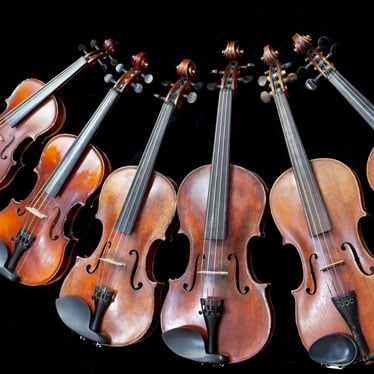What is The Difference Among String Types And Uses?

As a string instrument musician, you know that the type of strings you use has a particular impact on the playability, projection, and overall sound of your instrument. Although the construction of your bowed or fretted string instrument orchestrates the quality of your sound, certain types of strings can either enhance or detract this quality. By choosing the best strings for your specific instrument and playing style, you can ensure your best performances.
Testing every type of string on the market simply isn’t feasible for most student musicians. However, when you understand the basics of string construction, you’ll be able to interpret the characteristics of the strings before you buy them. Or, at least narrow down your options so that you can purchase a few sets for experimentation.
String Fundamentals
The earliest examples of strings were entirely organic. Evidence suggests that in the Eastern empires, bowed strings were constructed from intestinal tissue from a variety of animals including birds or beasts. Violin strings were initially fabricated from twisted sheep intestines in the 1600s. However, by the late portion of that century, artisans in Italy had begun to wind silver around the G-string, in order to increase its volume.
By the 1800s string makers began to experiment with additional windings. Materials like copper and silver were wrapped around the D and G strings, and towards the end of the century, steel was being utilized to create the whole string, especially the E. Sting instruments nowadays are equipped with strings that have a base-core material which is wrapped with some type of metal. Crafters understood that other core materials provided increased volume and that windings, including steel, tungsten, and aluminum, produce different tonal qualities.
Because steel core strings offered greater stability, projection, and response, they dominated the market for a number of years. However, there were essential draw backs with steel. Steel has less ability to stretch. Since violin construction hasn’t changed much over the last 300+ years, steel strings present a potentially damaging influence on the wooden instrument. Moreover, the tonal quality produced by a steel string has less warmth than organic gut, which is a hindrance in many music styles.
Enter Thomastik Infeld. Since 1919, this prodigious company has been the trusted source for a variety of hand-made types of strings, and it was their dedication to innovation that altered the course of string history. They experimented with a synthetic nylon, called perlon, which combined the best of steel and gut into one “dominate” string. And this revolution led to a large popularity for synthetic core strings for string instruments.
Types of Strings and Characteristics
Knowing the basic evolution of strings is the first step to understanding their characteristics. The following information can help you ascertain string uses in relation to the type of music you prefer, as well as the type of instrument you play.
Gut Core—Many professionals still choose gut core strings for the rich warm tones they generate, and are often used with classically bowed instruments and classical music. Features include:
- Pliable feel with less responsiveness. This means that more pressure is required to depress the string on the fingerboard
- Highly susceptible to changes in temperature and humidity. For example, moving your instrument under hot stage lights often requires re-tuning.
- Plenty of overtones. These strings deliver tonal depth that is perfectly splendid.
Steel Core—This type of string delivers very bright tones and is perfect for fiddlers.
- Very responsive. Use less pressure to make contact.
- Durable. Once fully stretched, they retain their tune for longer periods of time.
- Bright, clear tones with less overtones.
Synthetic Core—Used by many professionals and beginners, these strings combine stability with warmth.
- Great response and projection.
- Warm tones without being too bright.
- Includes the durability of steel.
The tension and gauge of the string also impacts its characteristics. Gauge refers to the actual thickness of the string core, while tension refers to the pulling force exerted by each end of the string when it is taut. These aspects are further classified by the manufacturer as either light, medium, or heavy, indicating their specific measurements. However, there are no set standards for these features. The things that you need to remember are:
- Gauge—the lighter the thickness, the more bright and responsive.
- Tension—the higher the tension the more bright and responsive.
Suggestions and Choice Options
Beginner musicians should choose types of strings in the mid-range. Thomastik Infeld offers an Alphayue string set that is exceptional for new violinists and affordably priced at around $20. Likewise, their Dominant strings are celebrated by students and professionals alike for their incredible warmth, while their Vision set is particularly designed for solo work. Fretted instrumentalists can also explore a variety of string options, depending on the style and type of music preferred.


